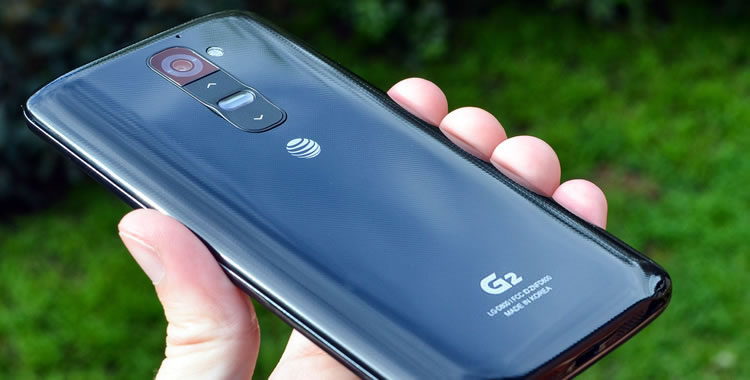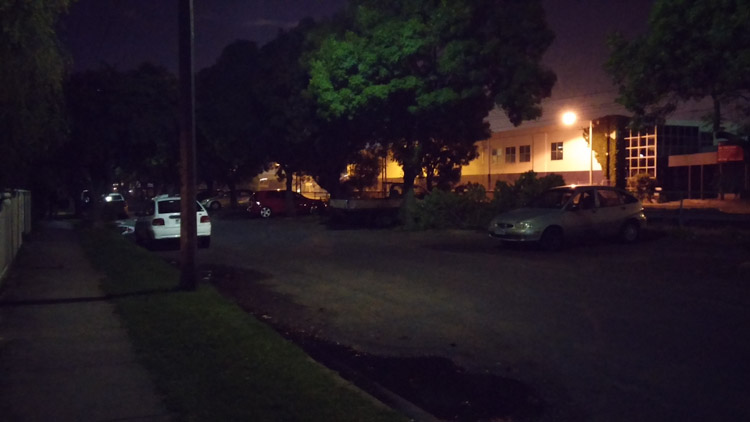Camera: Is That Really You, LG?
Like with a range of the top Android smartphones, LG has gone for a Sony sensor in the G2's camera module. The sensor is a 13-megapixel Sony Exmor RS IMX135 1/3.06" backside illuminated CMOS unit with 1.12 μm pixels, and it's paired with an f/2.4 lens with a 4.0 mm focal length (29mm at 35mm conversion). The entire module is optically stabilized through a system that counteracts movements with data provided by a gyroscope.
Video recording capabilities include 1080p/60 video at 30 Mbps, 1080p/30 at 20 Mbps, and some interesting software implementations such as tracking zoom and audio zoom. There's also a 2.1 megapixel front-facing camera capable of 1080p/30 video.
In strong lighting, the G2 is capable of some spectacular images. The processing software and firmware aboard the device manage to get color reproduction and white balance very accurate, with the selected exposure and ISO often being perfect. The sensor also exhibits decent dynamic range, which brings the details of shadows to life; if you need more dynamic range, a fantastic HDR mode will make high-contrast images look even better.
The f/2.4 lens is fairly decent as far as smartphone glass goes: images look sharp and there's a reasonable amount of detail when looking at a 100% crop (especially at 13 megapixels). Bokeh is weak and there's not much room for creative use of depth of field, as you would expect, but you are able to focus reasonably close when needed. The 29mm-effective focal length is perfect for most applications, allowing you to capture subjects without needing to be too far away.
Moving indoors, or shooting in more cloudy situations, and the G2's camera implementation struggles a little more than I saw with the Galaxy S4 (which uses an identical sensor). Photos appear slightly washed out and less vibrant than you would expect, which is likely an effect of the automatic selection of the wrong white balance and exposure. However, it's still possible to get decent photos in these sorts of conditions, especially if you make some slight manual adjustments to the settings.
Under artificial lighting at night, the G2's camera again performs acceptably, but not amazingly. More often than not, photos are sharp and bright enough that they're usable, although in some situations grain and heavy post processing can affect the final quality. With optical image stabilization compensating for a small pixel size, you can use the G2's camera without a flash in quite dark situations, but the darker it gets, the less quality you'll experience.
Night photography - often a big talking point for smartphone cameras these days - is the best I've seen from an Exmor RS-packing device, thanks once again to OIS. However, the 1.12 μm pixel size and f/2.4 lens isn't the perfect combination for low-light photography, with significantly less light being let in compared to the 2.0 μm pixels and f/2.0 lens on the HTC One, for example. Despite the inclusion of OIS significantly enhancing the G2's night imaging capabilities, it falls behind the better optics of the HTC One and Lumia 925.
LG's chosen 2.1-megapixel front facing camera is surprisingly decent if you have the right lighting, capturing images that are sharper than I've seen from other front-facing units. However, it's still only suitable for the occasional selfie and video call, with the rear camera being significantly better.
In trying to compete with the Galaxy S4 first and foremost, the LG G2 comes with a strong suite of camera features, from the usual HDR, panorama and burst shot modes, to some interesting additions. Like with many other flagship devices, the camera's ability to take quick burst shots comes in useful for a range of shooting modes: 'Shot & Clear' allows you to remove unwanted background objects, while 'Time Catch Shot' takes a burst of photos before and after you press the shutter so you don't miss that crucial shot.
Alongside a standard panorama mode, LG has also kept in Android 4.2's Photo Sphere mode, renaming it to 'VR Panorama'. By continually panning around a scene, VR panorama constructs a virtual, Google Street View-like array of images, which you can re-enter later and pan around. Other photo modes include 'Beauty Shot' (a high luminance filter), 'Sports' (forced quick shutter speed) and 'Night' (forced long shutter speed).
The G2 also features both a photo and video mode that allows you to capture from both the front and rear cameras simultaneously. I couldn't really find a serious use for this feature, because I never found it necessary to include my face alongside whatever I was photographing, but it could come in handy for some people (maybe).
Although one of my favorite smartphone video modes, slow motion, is missing from the LG G2's video recording features, the device is capable of recording 1080p at both 30 and 60 frames per second. While the latter takes up a bit more space when recording, it gives significantly more clarity and realism, making videos look very much like real life. Quality is also very good from the Exmor RS sensor, and although optical stabilization doesn't compensate as much as the system found in Nokia's Lumia phones, it still helps smooth out pans and shakes. I had some slight issues with automatic focusing, but this was only when moving towards and away from close objects reasonably quickly.
Like with the still photo modes, there's a few video modes to play with. You can alter faces as you're recording with the 'Live Effects' mode, and 'Tracking Zoom' allows you to, as you're recording, select a small area of the screen to magnify. Unfortunately the Tracking Zoom mode only records video at 720p, and it doesn't automatically track objects as they move across the screen, making it not as useful as I had hoped.
This is actually the first LG-produced smartphone that I've used that packs a decent camera. Like usual, Sony's Exmor RS sensor is very capable of producing awesome daylight shots, and the inclusion of OIS assists with low-light photography. It may not be the best all-round camera that's available on a smartphone, but a strong feature set and decent image quality complements other solid areas of this device.
















